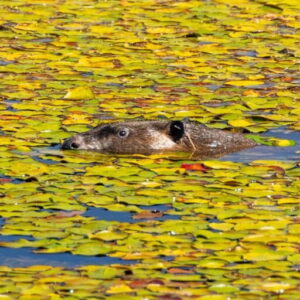Physical Address
304 North Cardinal St.
Dorchester Center, MA 02124
Physical Address
304 North Cardinal St.
Dorchester Center, MA 02124

A high Sierra meadow in California is demonstrating the remarkable power of beaver restoration after the state’s first beaver translocation in decades brought new life to the landscape. Tásmam Koyóm, a meadow returned to the Mountain Maidu people in 2019, has transformed from dry terrain into a thriving wetland ecosystem since beavers were released there in 2023.
Where water once rushed downslope through deeply carved channels, the beaver family has built dams that now slow and spread snowmelt across the meadow. The result is a dramatic landscape transformation: meandering streams, a beaver pond with a chest-high lodge, and diverse habitats supporting hip-high grasses and willow thickets. The meadow now retains water well into summer, creating conditions that could help California cope with increasingly severe droughts and wildfires.
This successful restoration marks a significant shift in California’s relationship with beavers. Historical fur trapping in the 19th century nearly eliminated the species from the state, and survivors were long treated as pests. State officials even denied that beavers had ever been widespread in California. However, growing research and advocacy efforts have led to policy changes and the establishment of a state restoration program.
The Mountain Maidu carefully prepared for the beaver reintroduction by building dozens of structures that mimicked beaver dams before the animals arrived. This groundwork helped ensure the habitat was ready to support the relocated beaver family. The project now serves as a promising template for landscape restoration across California as the state faces the challenges of climate change, offering hope for natural solutions to environmental pressures.